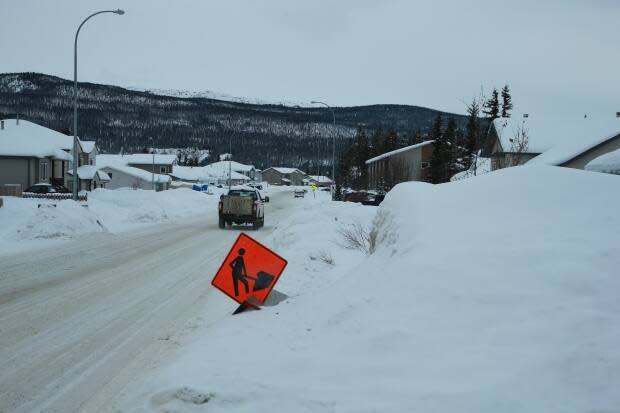Whitehorse hasn't seen this much snow in nearly half a century

Environment Canada says this winter's snowfall in Whitehorse is in near record-breaking territory. It's the most snow the city has seen since 1972.
The snow began to pile up in the first few days of November, when a winter storm hit Whitehorse.
"So a big record-breaking kind of event like that kind of sets you up for snow success, as it were, because right away our snow-on-the-ground sensors picked up that Whitehorse ... had the most snow on the ground for the first 22 days of November," said Armel Castellan, meteorologist with Environment and Climate Change Canada.
That record-breaking snowfall was over 40 cm, an amount that far exceeds daily records for October and November which normally range from five to 15 cm.

Castellan says the city now has about 66 cm of snow on the ground, as measured at the airport.
"That is only second to 1972, at which point on February 22, 94 centimetres was still on the ground," said Castellan.
People in Whitehorse just have to look outside to see the copious amounts of snow, piled high alongside driveways, sidewalks and trails. For some people, the only complaint is when city crews plow roads and push snow into newly-shovelled driveways.
Castellan says Environment Canada started measuring on the ground snowfall statistics in 1955. He says Whitehorse had another big snow year in 1985, when there was 54 centimetres on the ground on Feb. 22.

Castellan says the region has seen several big dumps of snow this winter.
"The big events like we saw in the early part of November and again a few more times this winter, particularly on the U.S. side, on the Alaska side, have all been really associated to atmospheric rivers that have brought really copious amounts of precipitation to meet up with that cold on mountain passes," he said.
Castellan says there is bound to be more snow on the way this winter, as it's still only February. He says records could still be broken, depending on how much moisture comes from the Pacific region.

